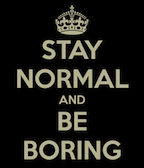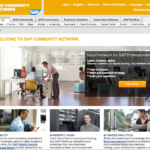Jonathan Becher, CMO of SAP, sees innovation as absolutely mandatory, to be approached by organizations in leaps and bounds rather than baby steps. In his world, ROI means “return on innovation,” and the culture of innovation at SAP is an essential foundation for providing an innovative, meaningful customer experience. Its little wonder that Jonathan won The CMO Award for Innovation from The CMO Club. Here’s our interview:
Drew: In your presentation at The CMO Club Summit in April, you mentioned that innovation isn’t a buzz word; it’s an imperative for marketers. Can you explain why innovation is so important, particularly for CMOs?
Jonathan: For all good business leaders, there comes a day when you realize: “what got us here, won’t get us where we need to go.” We all know that the way customers consume information, products, and services has completely changed. It follows that the way we need to engage with customers must also change. However, incremental changes will not be sufficient; we need to innovate the discipline of marketing.
Drew: Real innovation requires organizational change. Can you talk about the changes you made to your marketing organization to institutionalize innovation?
Jonathan: A few years ago, I created a group called “Innovation Marketing.” The charter of that group was to try new things, break rules, make people uncomfortable, and change the status quo. The team generated tons of ideas, many of which were very interesting and impactful. However, it didn’t accomplish what I expected, as we were essentially segregating innovation to one small group. In fact, it created some resistance to change and innovation. We disbanded the group and focused on creating a culture of innovation instead. Now, we highlight efforts throughout marketing that push boundaries and embrace change, even ones that are not completely successful. In some sense, we’re reinforcing our corporate motto of “Run Better” – the quest for relentless improvement.
Drew: Marketing seems to be getting increasingly complex in terms of ways to spend and ways to monitor. Has it gotten more complex for you and, if so, how are you dealing with that complexity?
Jonathan: Luckily for me, I run marketing for a company that specializes in using technology to solve complex business challenges. For example, I have a mobile dashboard where my leadership team and I have real-time visibility into all parts of our marketing business. We can see what’s working and what isn’t, then redeploy resources and budget as necessary.
Drew: Have you been able to link your innovative marketing activities to the kinds of business metrics favored by CEOs?
Jonathan: Innovation is an investment, so you need ROI for it as well. Return on innovation.
We try to run marketing like a business, which means that we need to be able to prioritize between all of our initiatives. From an analytics point of view, we distinguish between the macro view (crunching data on a scale unheard of a few years ago) and the micro view (data equivalent of a focus group).
At the macro level, we apply marketing-mix modeling to get a holistic understanding of marketing performance across channels. We can then tie marketing investments directly to corporate objectives, and reallocate the mix accordingly. Based on this type of analysis, we have shifted unproductive spend to tactics where we have seen higher ROIs.
At the micro level, we’re constantly trying to optimize each interaction with our customers. Whether it’s an outbound marketing campaign, a customer event, or an inquiry on our Web site, we apply statistical analysis to the wealth of information we have about our customers to predict what’s relevant to them and to personalize the engagement. This level of customer-centric targeting, along with a test-learn culture, allows us to measure the effectiveness of everything we do and maximize ROI at the micro level.
Drew: SAP seems to be in the midst of a brand transformation. Can you describe that transformation?
Jonathan: I’m not sure whether you should call it a transformation or a brand expansion. For many years, our approach was talking about how big, successful companies run SAP. You didn’t know what exactly we did for the companies, but you knew we were somehow linked with their success.
Now, we’re taking a much more human approach that’s closely linked to our company mission to “help the world run better and improve people’s lives.” We’re telling stories of how we create value, not only for our customers, but for our customers’ customers. For example, rather than talking about how a big bank benefits from an SAP deployment, we talk about how a man in a very rural area who can’t physically get to a bank is now able to bank on his mobile phone. This access to banking opens up entirely new economic possibilities that weren’t previously an option to this man and improves his life. SAP makes that possible.
It’s not just “business runs SAP”; it’s also “life runs SAP.” You can sum up the change as moving from B2B to P2P – people to people.
Drew: As CMO, have you been able to address the entire customer experience? Were there any organizational challenges you needed to overcome?
Jonathan: In my view, the customer experience is the responsibility of every single employee at SAP. That said, marketing must be the champion of the overall customer experience across all channels.
While marketing doesn’t own all the customer experience channels, it can help make the experience consistent. For example, we know that, if we invite a group of executives to one of our briefing centers for a day of meetings, we’re obligated to deliver a consistent experience – from the messaging on the invitation to the car ride from the airport, and everything else until our guests are back in the airport to go home.
Marketing doesn’t manage the briefing centers, but we provide counsel to the facilities managers and the sales teams that run the meetings to help them understand the story they want to tell and provide them with the right assets to help them tell that story.

